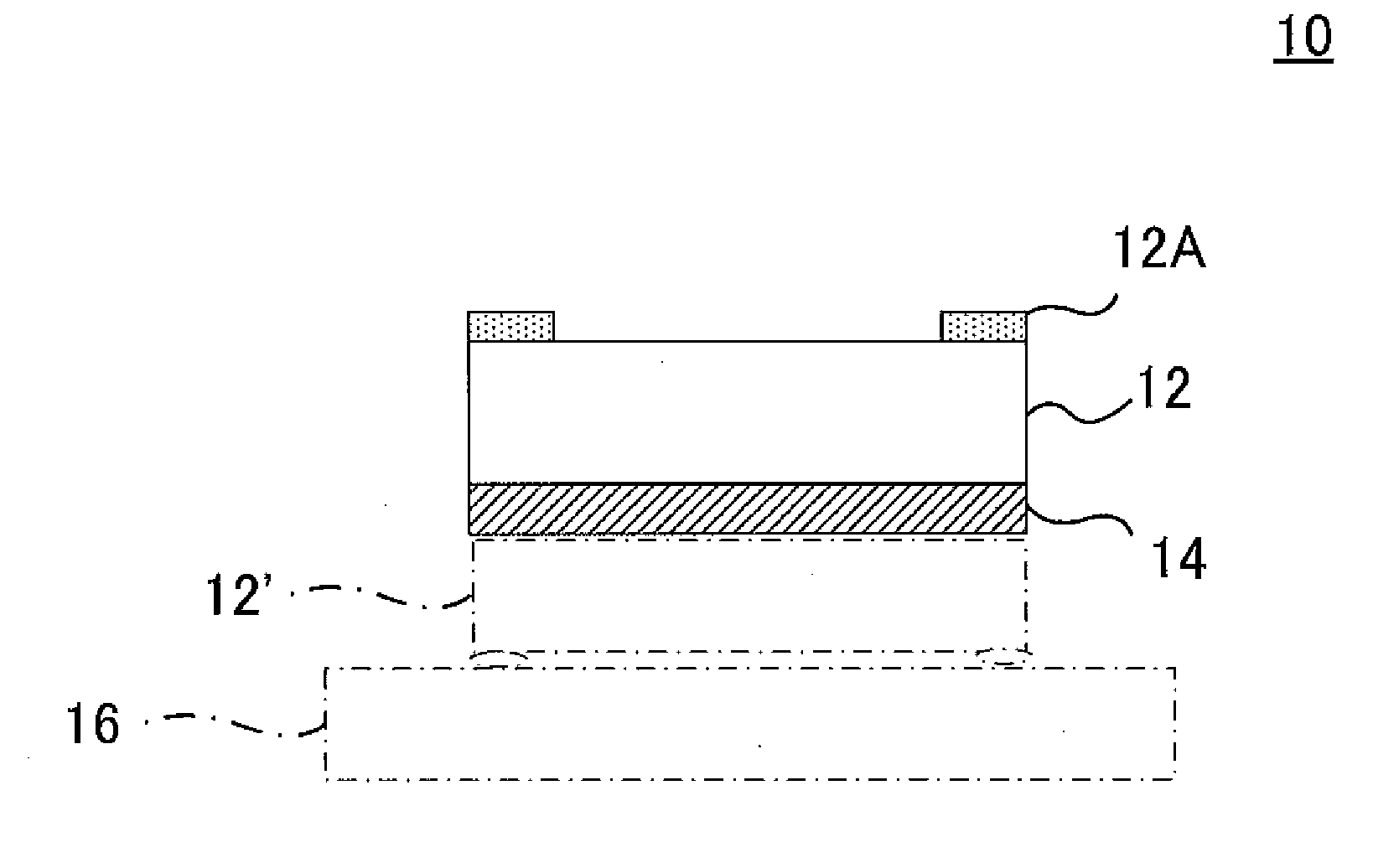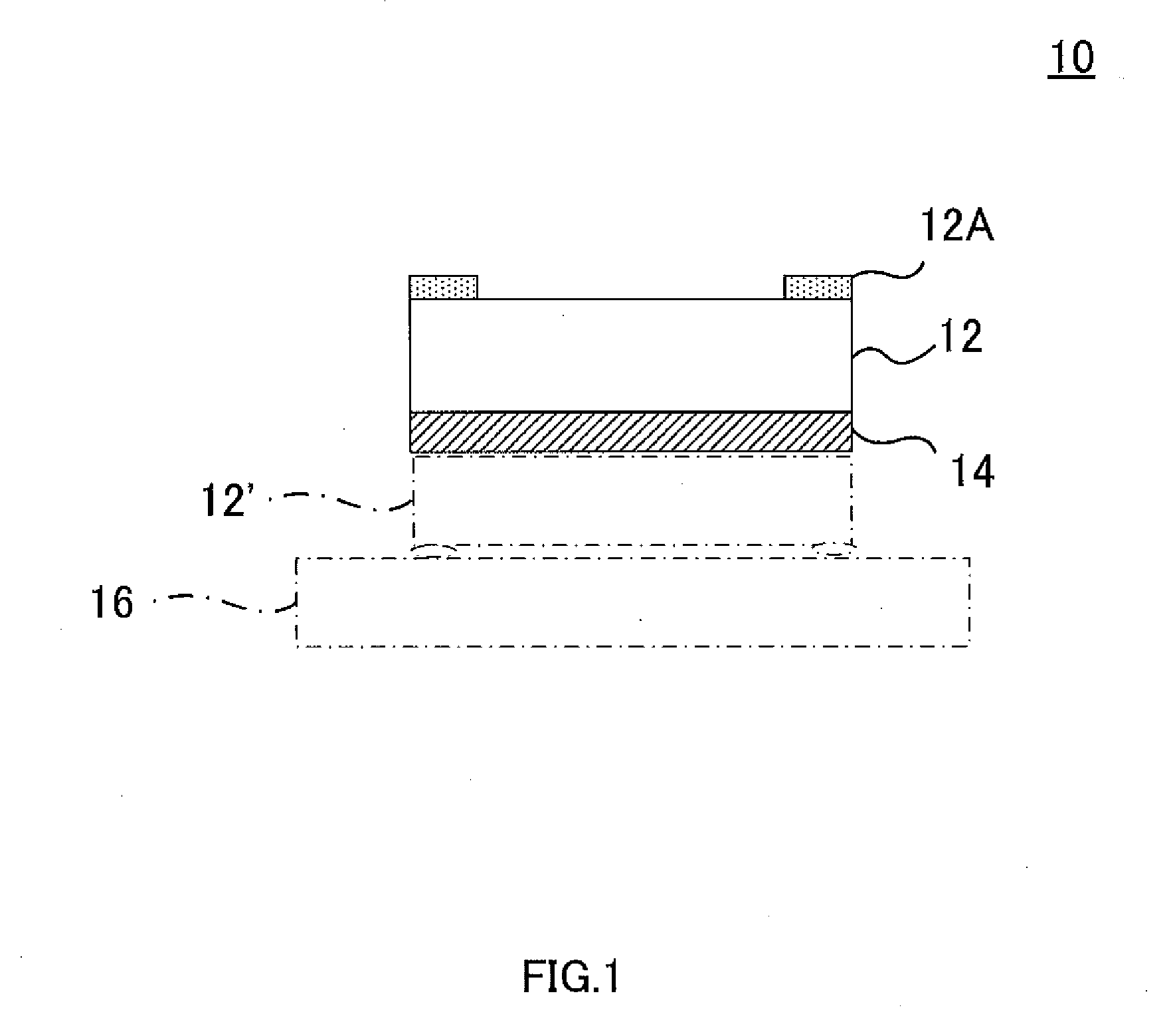Polymide resin composition, adhesive agent and laminate each comprising same, and device
- Summary
- Abstract
- Description
- Claims
- Application Information
AI Technical Summary
Benefits of technology
Problems solved by technology
Method used
Image
Examples
example 1
Preparation of Polyimide Varnish
[0145]Four types of diamines (APB, 1-Si, 14EL, XTJ-542) and one type of acid dianhydride (s-BPDA) were blended with a molar ratio of APB:1-Si:14EL:XTJ-542:s-BPDA=0.49:0.1:0.2:0.21:1.0, in a solvent of NMP and mesitylene adjusted to have a ratio of 7 / 3. The obtained mixture was stirred for four or more hours in a flask into which a dry nitrogen gas was able to be introduced, thereby providing a polyamic acid solution with a resin solid content weight of 20 to 25 weight %. After sufficient stirring, the reaction system was heated to approximately 180° C. while stirring in a flask with a Dean-Stark tube, and water produced by a dehydration reaction was taken outside the system to obtain a polyimide varnish. The viscosity of the obtained polyimide varnish was 8.0×103 mPa·s, which was measured by an E-type viscometer at 25° C.
Preparation of Film
[0146]The obtained varnish solution was applied at a rate of 10 mm / sec onto a PET film subjected to a mold releas...
example 2
[0147]A polyimide varnish was prepared in a manner similar to Example 1, except that the four types of diamines (APB, 1-Si, 14EL, XTJ-542) and the acid dianhydride (s-BPDA) were blended with a molar ratio of APB:1-Si:14EL:XTJ-542:s-BPDA=0.29:0.3:0.2:0.21:1.0, a polyimide varnish. The viscosity of the obtained polyimide varnish was 5.0×103 mPa·s, which was measured by an E-type viscometer at 25° C. From the obtained polyimide varnish, a polyimide film was prepared in a manner similar to Example 1.
example 3
[0148]1-Si as a diamine component and s-BPDA as an acid dianhydride component were blended with a molar ratio of 1-Si:s-BPDA=0.1:1.0, in a solvent of NMP and mesitylene adjusted to have a ratio of 7 / 3. The obtained mixture was stirred for four or more hours in a flask into which a dry nitrogen gas was able to be introduced, thereby providing a polyamic acid solution with a resin solid content weight of 20 to 25 weight %. After sufficient stirring, the reaction system was heated to approximately 180° C. while stirring in a flask with a Dean-Stark tube, and water produced by a dehydration reaction was taken outside the system to obtain a polyimide varnish (A).
[0149]To the obtained polyimide varnish (A), three types of diamines (APB, 14EL, XTJ-542) as diamine components were added so that the final monomer ratio was APB:1-Si:14EL:XTJ-542:s-BPDA=0.49:0.1:0.2:0.21:1.0 in terms of molar ratio. The obtained mixture was stirred for one or more hours in a flask into which a dry nitrogen gas ...
PUM
| Property | Measurement | Unit |
|---|---|---|
| Temperature | aaaaa | aaaaa |
| Temperature | aaaaa | aaaaa |
| Temperature | aaaaa | aaaaa |
Abstract
Description
Claims
Application Information
 Login to View More
Login to View More - Generate Ideas
- Intellectual Property
- Life Sciences
- Materials
- Tech Scout
- Unparalleled Data Quality
- Higher Quality Content
- 60% Fewer Hallucinations
Browse by: Latest US Patents, China's latest patents, Technical Efficacy Thesaurus, Application Domain, Technology Topic, Popular Technical Reports.
© 2025 PatSnap. All rights reserved.Legal|Privacy policy|Modern Slavery Act Transparency Statement|Sitemap|About US| Contact US: help@patsnap.com



